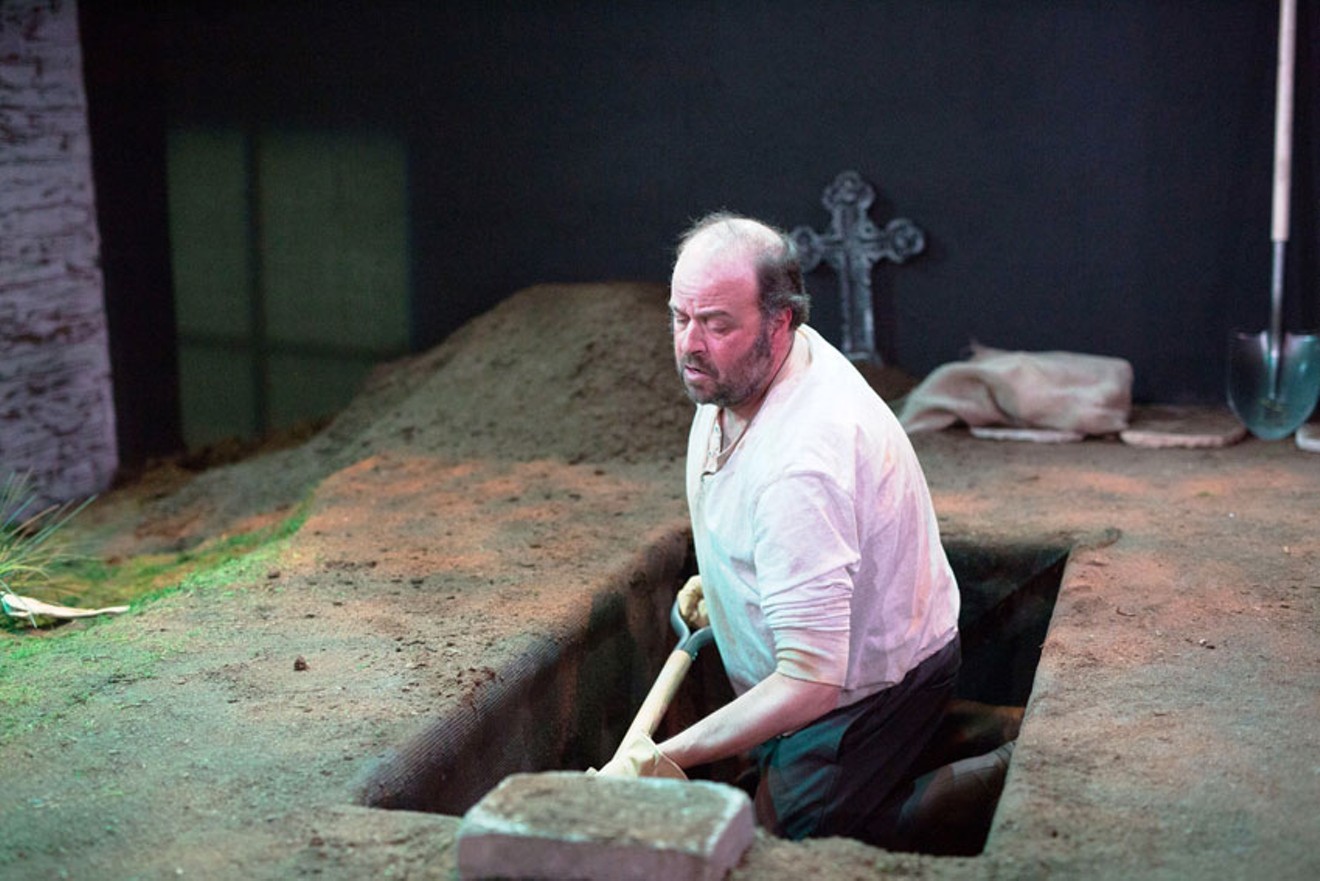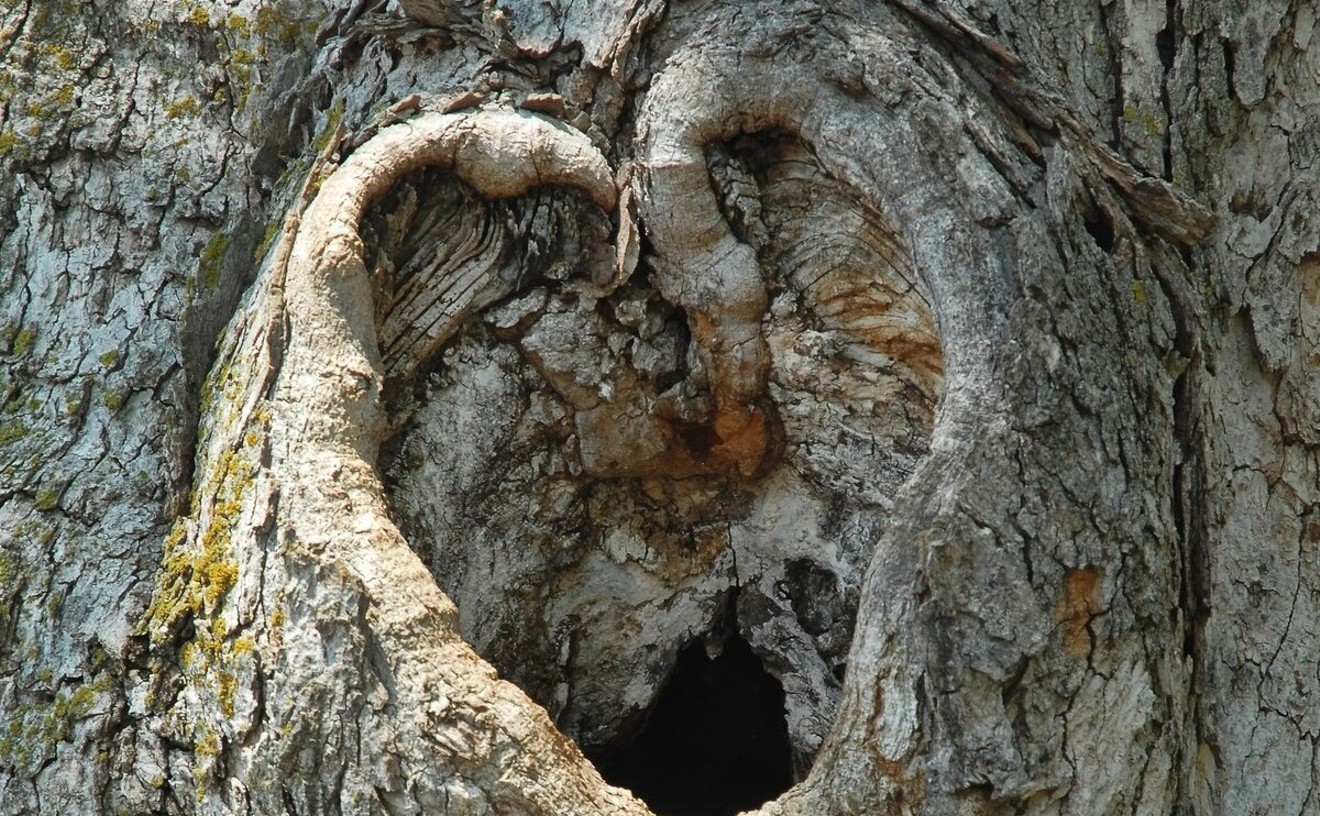A Skull in Connemara is the second in Martin McDonagh’s award-winning Leenane Trilogy. The title comes from Lucky’s nonsensical, despairing monologue in Samuel Beckett’s Waiting for Godot, and it falls between The Beauty Queen of Leenane and The Lonesome West. All three were written in a frenzy of creative energy in a single year in the mid-1990s, when McDonagh was in his early twenties. The plays took London and New York by storm; they represented a new take on Irish literary tradition, a kind of melding of the established and the boundary-breaking contemporary. Now, with Billie McBride directing, Miners Alley has staged a pitch-perfect production of Skull.
McDonagh, the son of Irish parents, grew up in London but spent his boyhood summers in Ireland. Like John Millington Synge, he created an original theatrical language that heightened and stylized the rhythm of everyday Irish speech. Influenced by such filmmakers as Quentin Tarantino, Martin Scorsese and Sam Peckinpah, he took some of the dark and violent themes explored by Synge and made them darker and more vicious. There are all kinds of unpleasant elements in A Skull in Connemara: murderous blows; a youngster shoved into an open grave; casual talk about whether it would be worse to drown in pee or vomit; reference to a cow dragged screaming to its death (which is accomplished with a brick); and talk about how much more fun it would be to cook a live hamster if the oven had a glass door. Yet the dialogue is so brilliant, swift and funny that you find yourself laughing before a shadow of repulsion can begin to flicker.
The play begins with the central character, Mick Dowd, swilling poteen with MaryJohnny Rafferty, a gossipy neighbor who likes to drop by and cadge a drink after the regular village bingo games — at which she cheats. Mick earns extra money every year by digging up bodies in the local graveyard to make room for newer corpses. This time, he learns, he’ll be working in the part of the graveyard where his wife, Oona, is buried; she died seven years earlier in an accident he caused while driving drunk. Or perhaps, as the villagers believe, he staved in her skull before that final ride. Enter MaryJohnny’s grandson Mairtin, a babbling idiot who’s thrilled because he’s been assigned to join Mick at his grave-digging. John Houser is too wildly ungrounded as Mairtin at the beginning, but profoundly entertaining once he’s settled into the role. Carla Kaiser Kotrc gives MaryJohnny a fascinating edge of smiling spite, and Logan Ernstthal’s Mick is convincing from his earliest moments, a quiet and apparently reasonable man with something threatening and unspoken at his core.
The performances are among many strong elements of this production. Set designer Jonathan Scott-McKean works wonders in a small space. The first scene takes place in Mick’s bare-bones and featureless home. But then we see Mick and Mairtin digging in the ingeniously constructed graveyard, stepping in and out of graves, tossing real dirt. Mairtin is goofing with two skulls, pretending they’re kissing or placing them against his front like breasts; Mick is marginally more serious. Neither is moved to any kind of introspection by the proximity of the dead, though Mick does sober as he contemplates Oona’s grave. He doesn’t actually get to work on it until town constable Thomas — who happens to be Mairtin’s equally dopey brother— arrives on the scene. Thomas (a comic performance by John Jankow) yearns to be the kind of cop he’s seen on Hill Street Blues, or able to solve forensic riddles like Quincy, M.E. — a skill he could use when it turns out Oona is missing.
Back at Mick’s home, Mick and Mairtin take mallets to the bones they’ve unearthed, pulverizing skulls, sending bone dust flying. There’s a crazed, gleeful juvenile humor here: Earlier, MaryJohnny had asked how Mick disposes of the dug-up corpses, and he’s assured her the bones are slipped reverently into the river, followed by prayers. The reality is a raucous finger in the eye to religious piety. But you can read a deeper meaning into the action, too, though I rather doubt McDonagh intended it: That the bone-smashing represents a wild defiance of death itself by people who have absolutely nothing to lose.
A Skull in Connemara, presented by Miners Alley Playhouse through April 30, 1224 Washington Avenue, Golden, 303-935-3044, minersalley.com.
[
{
"name": "Air - MediumRectangle - Inline Content - Mobile Display Size",
"component": "12017618",
"insertPoint": "2",
"requiredCountToDisplay": "2"
},{
"name": "Editor Picks",
"component": "17242653",
"insertPoint": "4",
"requiredCountToDisplay": "1"
},{
"name": "Inline Links",
"component": "18838239",
"insertPoint": "8th",
"startingPoint": 8,
"requiredCountToDisplay": "7",
"maxInsertions": 25
},{
"name": "Air - MediumRectangle - Combo - Inline Content",
"component": "17261320",
"insertPoint": "8th",
"startingPoint": 8,
"requiredCountToDisplay": "7",
"maxInsertions": 25
},{
"name": "Inline Links",
"component": "18838239",
"insertPoint": "8th",
"startingPoint": 12,
"requiredCountToDisplay": "11",
"maxInsertions": 25
},{
"name": "Air - Leaderboard Tower - Combo - Inline Content",
"component": "17261321",
"insertPoint": "8th",
"startingPoint": 12,
"requiredCountToDisplay": "11",
"maxInsertions": 25
}
]












